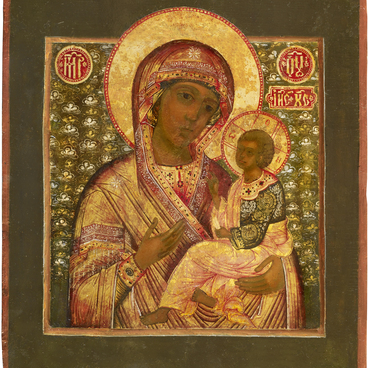The story of how the image of Jesus Christ not-made-by-hands came into being is described in the Apocrypha of the 4th – 5th centuries - this is the name of the texts that have not been included in the Canon, but do not contradict the Bible.
According to the legend, King Abgar V Ukkama, ruler of Edessa, which is in modern Turkey, sent an artist to paint a portrait of Jesus Christ. However, no matter how hard he tried, he could not capture the image of the Saviour. Then Jesus called for water and a towel - ubrus. He washed His face and wiped it with the cloth, and on it was His Divine Image. This image – the portrait on the towel - is called the Saviour, Not-Made-By-Hands or Mandylion, in the iconography. There is also a tradition of depicting the image of the Savior on a piece of tile –such image is called Ceramidion.
The first Mandylion was considered lost, however, in 544 it was rediscovered in Edessa, and in 944 it was moved to Constantinople and placed in the church of the Theotokos Faros. Researchers consider the Holy Ubrus the first icon. In due course icon painters began to copy the not-hand-made image, and it spread among Christians.
According to the legend, King Abgar V Ukkama, ruler of Edessa, which is in modern Turkey, sent an artist to paint a portrait of Jesus Christ. However, no matter how hard he tried, he could not capture the image of the Saviour. Then Jesus called for water and a towel - ubrus. He washed His face and wiped it with the cloth, and on it was His Divine Image. This image – the portrait on the towel - is called the Saviour, Not-Made-By-Hands or Mandylion, in the iconography. There is also a tradition of depicting the image of the Savior on a piece of tile –such image is called Ceramidion.
The first Mandylion was considered lost, however, in 544 it was rediscovered in Edessa, and in 944 it was moved to Constantinople and placed in the church of the Theotokos Faros. Researchers consider the Holy Ubrus the first icon. In due course icon painters began to copy the not-hand-made image, and it spread among Christians.

